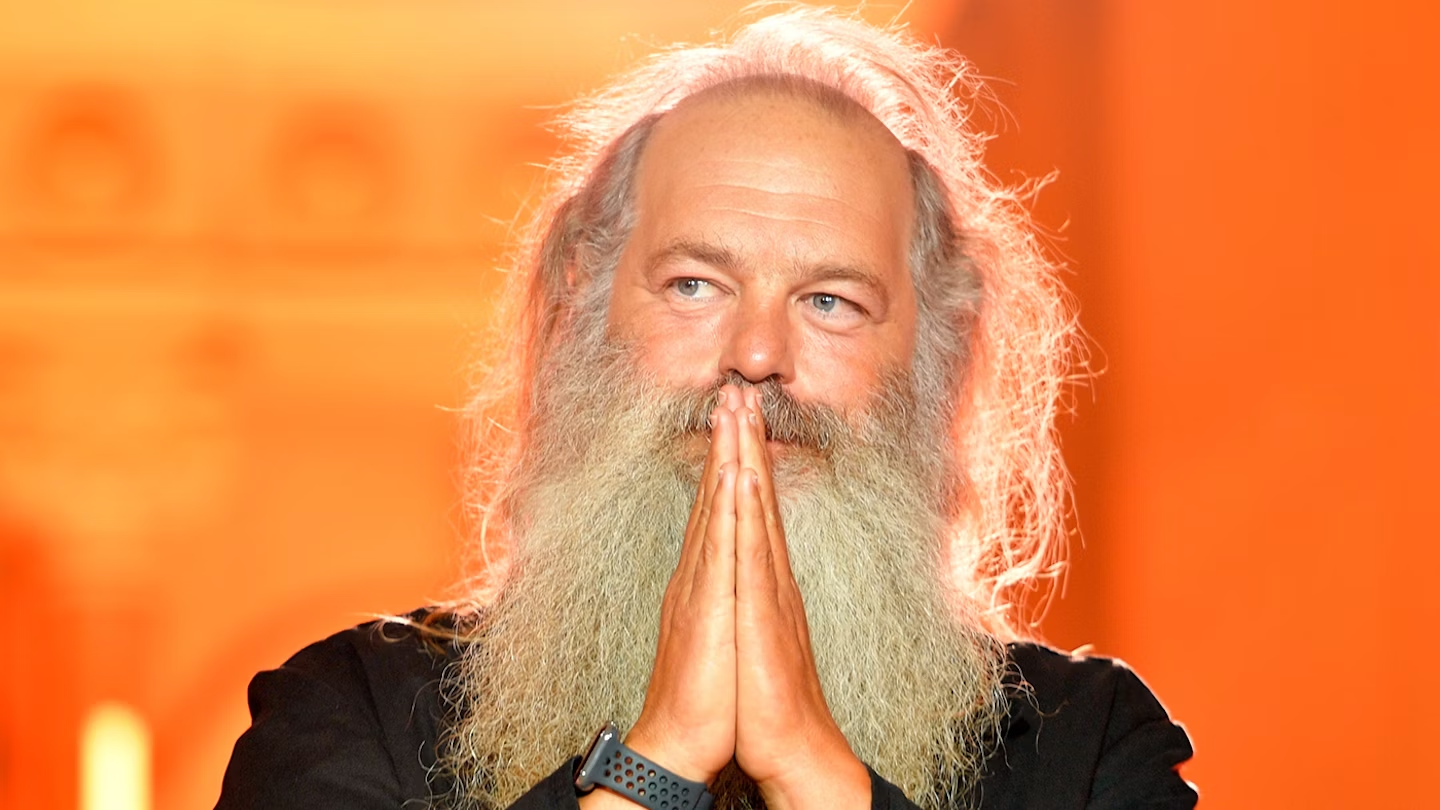20 September 2023 | Articles, Articles 2023, Communications | By Christophe Lachnitt
A Chief Communications Officer Operates Like A Music Producer
Their relationship with the brand should be akin to a producer’s relationship with music.
I just discovered an interview Rick Rubin gave to “60 Minutes” a few months ago:
It’s more than likely that Rick Rubin has influenced your cultural landscape given his significant impact on contemporary music across numerous styles. He has notably worked with AC/DC, Adele, Aerosmith, Brandi Carlile, Johnny Cash, LL Cool J, Sheryl Crow, Lana Del Rey, Neil Diamond, Eminem, Lady Gaga, Metallica, Mick Jagger, Jay-Z, Paul McCartney, Red Hot Chili Peppers, Run-DMC, Shakira, Ed Sheeran, Tom Petty, U2, and ZZ Top. In 2007, MTV recognized him as one of the most important producers of the last twenty years, and Time magazine has listed him among the hundred most influential people in the world.
Besides being simply extraordinary, his conversation with Anderson Cooper presents what struck me as four intriguing parallels between Rick Rubin’s relationship with music, serving the artists he collaborates with, and the relationship a chief communications officer should ideally have with a brand, serving the company they work for.
Firstly, he has no qualifications in production and no musical skill, just as a chief communications officer doesn’t possess deep expertise in the technical, commercial, financial, social, or legal subjects they deal with. Better still, I believe one of a chief communications officer’s primary qualities should be to add value to the diverse subjects they handle, just as Rick Rubin proves relevant across all music genres he produces. In both cases, detachment from, or even incompetence towards, the raw material is a quality, not a flaw as often perceived, as it enables greater creativity. The importance given to emotions, by both Rick Rubin and chief communications officers, is then crucial.
In this context, Rick Rubin relies on his taste and intuition to guide his artists. Similarly, a chief communications officer, in the end, is the brand’s guardian based on criteria that might defy perfect logic. The best chief communications officers step back and inspire, like Rick Rubin, brand promoters to give their best in service of it. In this regard, Jerry Seinfeld also emphasizes that taste and discernment represent the ultimate skill of the artist: “It’s one thing to create. The other is you have to choose. ‘What are we going to do, and what are we not going to do?’ This is a gigantic aspect of show-business survival. It’s kind of unseen, what’s picked and what is discarded, but mastering that is how you stay alive.” Indeed, every chief communications officer is something of an artist in the sense they have to arbitrate, often in an unscientific way, between what strengthens or weakens a brand. As Rick Rubin says, “you can’t copyright a feeling.”

Moreover, Rick Rubin operates as a “reducer” rather than a “producer”, condensing the message and emotion conveyed by music to its essence, focusing on his sensations to do so. A chief communications officer must also strive to distill a brand’s expressions to its purest form, focusing on the emotions it evokes, rather than being swayed by business partners/internal clients who sometimes aim to dilute a brand in approaches too far removed from its essence.
The fourth and final parallel between Rick Rubin’s method and the role of a chief communications officer is the most counter-intuitive. Indeed, I always encourage my clients to start with their target audiences, not their company’s internal issues, when designing and rolling out their communications activities1. However, one should also heed Rick Rubin’s precept that “the audience comes last” because it doesn’t know what it wants and only refers to what it has previously heard. This phenomenon can also prevail in communications, for instance when it comes to changing a brand’s positioning and the habits of its stakeholders towards it. This holds true, for the same reasons, in crisis communications situations and post-crisis recovery.
—
1 This naturally applies to both internal and external communications.


